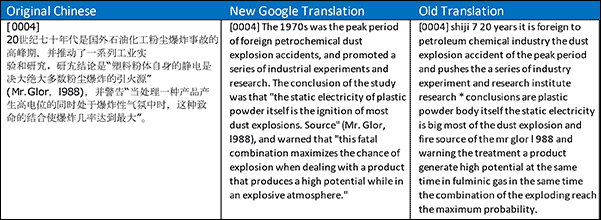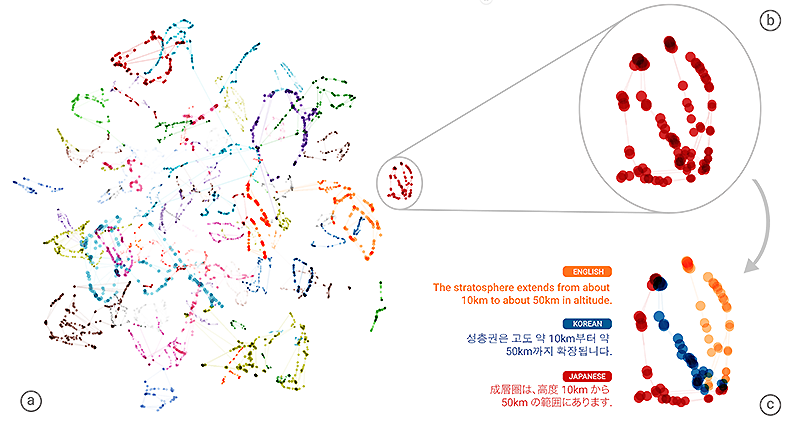
That’s why IFI is changing the source of our full-text English machine translations to Google Translate. Based on neural network technology, Google Translate offers an exceptional level of accuracy for translations. It brings us the most precise translations for our data, giving you the most reliable machine translations available on the market today. Google Translate overcomes problems found in most older phrase-based machine translation systems. Using a large end-to-end network, Google’s technology translates whole sentences at a time and continually learns to make improvements over time.

We will begin transitioning all new patent document machine translations over to the Google Translate engine this year. Older records will also be completely updated with translations from Google, a process we expect to be completed over the next 12-18 months.
With such a monumental step forward, we were curious to understand the history of machine translation and how it will continue to evolve. Believe it or not, machine translation—language translations using computers—has roots going back to the 1950s, when sixty Russian sentences were translated to English as the result of a project called the Georgetown-IBM Experiment.1
In fact, the idea of translating natural languages by machine goes back even further, first conceived all the way back in the seventeenth century. It would later become a reality in the late twentieth century, with the first prototype believed to be exhibited in 1937. The idea has seen exponential growth since then:2
- In 1958, a large memory device system was developed and installed for the US Air Force for Russian-English translations
- In 1970, Rule Based Machine Translations (RBMT) were developed, using a bilingual dictionary and a set of linguistic rules for each language
- During the 1980s, Japan showed the greatest commercial activity, focusing not only on Japanese-English and English-Japanese translations, but the need for translations to and from Korean, Chinese, and other languages
Read this Google blog post for a detailed description of this image and how the neural network functions.

Image courtesy of Google

Image courtesy of Google
The same type of logic was then adapted to language translations. Instead of an image, the source is the original language which is decoded by the neural network and “styled” in a different language. The neural network recognizes only one set of specific features, which is a particular language. It doesn’t need to know the origin of the encoded source, but it can express the output in Spanish, for example. Watch this video clip with an explanation from a Google systems engineer.
As for the future of machine translations, we look forward to seeing what impacts the greater use of AI technologies will hold. At the recent Applied Machine Learning Days5 conference in Switzerland, companies demonstrated systems for helping call center agents and emergency dispatchers. Both systems make use of not only recognized words, but intonations in speech to provide clarity and context. The emergency medical technology from Corti.ai aids dispatchers with diagnosing illnesses and advises on the most effective course of action.
Whatever the future may hold, you can be sure that IFI will always pursue the highest quality possible for translating patents to English.
References
- Hutchins W.J. (2004) The Georgetown-IBM Experiment Demonstrated in January 1954. In: Frederking R.E., Taylor K.B. (eds) Machine Translation: From Real Users to Research. AMTA 2004. Lecture Notes in Computer Science, vol 3265. Springer, Berlin, Heidelberg
- Hutchins W. John (1995) Machine Translation: A Brief History. From Concise history of the language sciences: from the Sumerians to the cognitivists, pages 431-445. Edited by E. F. K. Koerner and R. E. Asher. Pergamon Press, Oxford, United Kingdom
- Helft, Miguel (2010, March 10). Google’s Computing Power Refines Translation Tool. New York Times, page AI, Retrieved from https://www.nytimes.com/2010/03/09/technology/09translate.html
- Yonghui Wu and Mike Schuster and Zhifeng Chen and Quoc V. Le and Mohammad Norouzi and Wolfgang Macherey and Maxim Krikun and Yuan Cao and Qin Gao and Klaus Macherey and Jeff Klingner and Apurva Shah and Melvin Johnson and Xiaobing Liu and Łukasz Kaiser and Stephan Gouws and Yoshikiyo Kato and Taku Kudo and Hideto Kazawa and Keith Stevens and George Kurian and Nishant Patil and Wei Wang and Cliff Young and Jason Smith and Jason Riesa and Alex Rudnick and Oriol Vinyals and Greg Corrado and Macduff Hughes and Jeffrey Dean. Google's Neural Machine Translation System: Bridging the Gap between Human and Machine Translation. (2016, October 8). CoRR, vol. abs/1609.08144 Retrieved from https://ai.google/research/pubs/pub45610
- Faes, Florian (2019, February 21). How Language Featured at the 2019 Applied Machine Learning Days. Retrieved from https://slator.com/technology/how-language-featured-at-the-2019-applied-machine-learning-days/